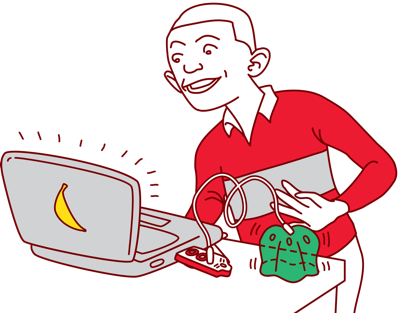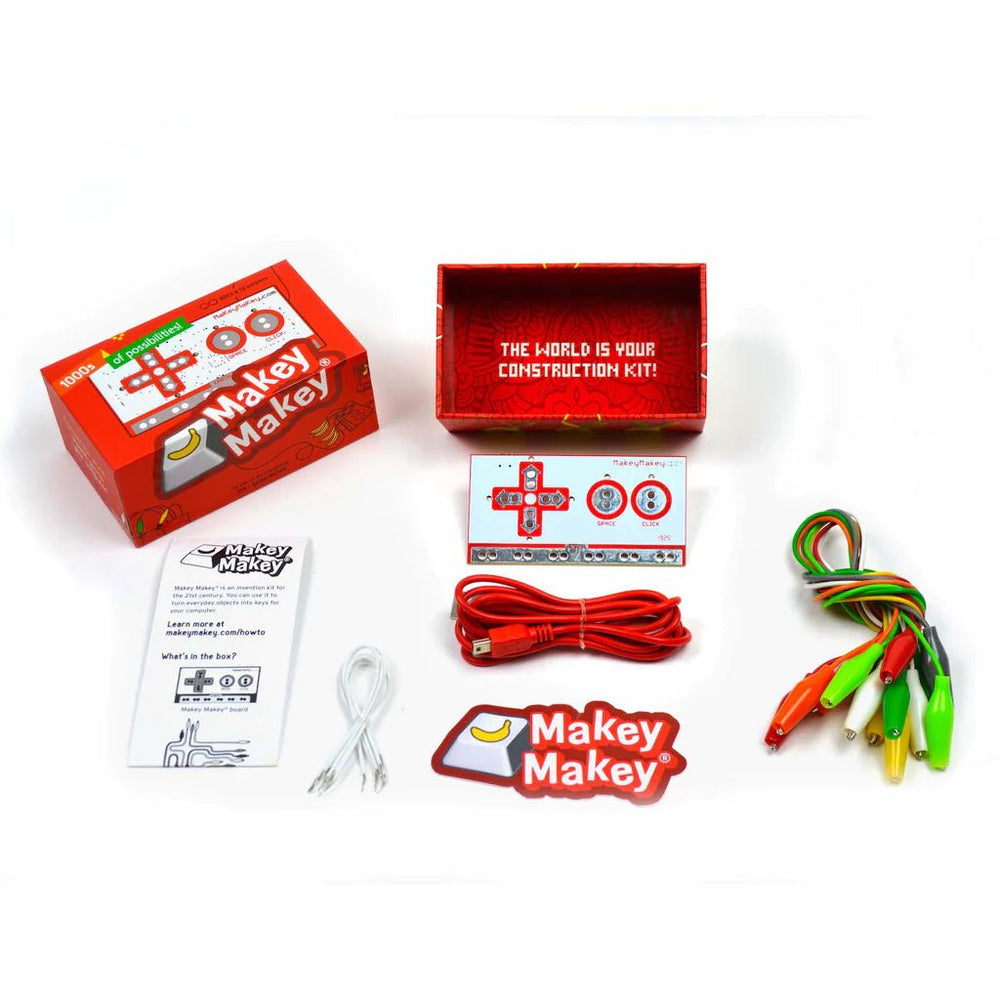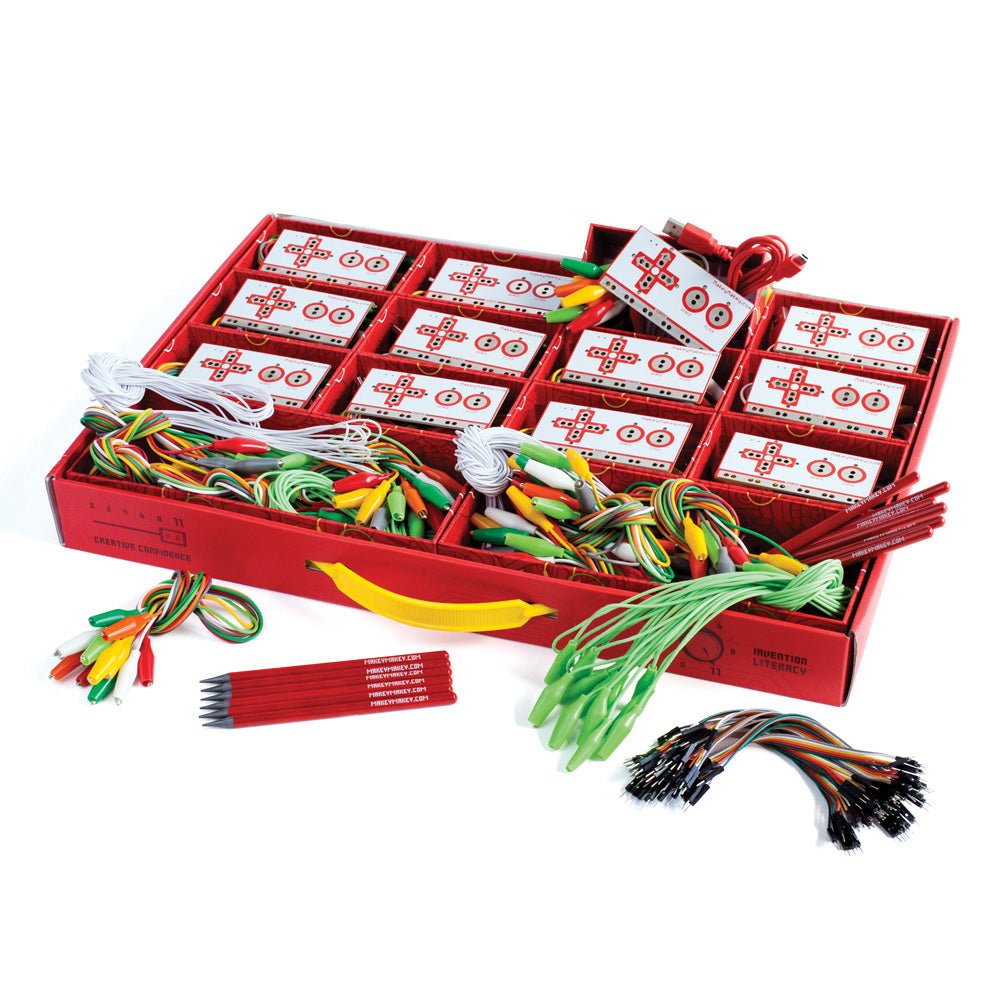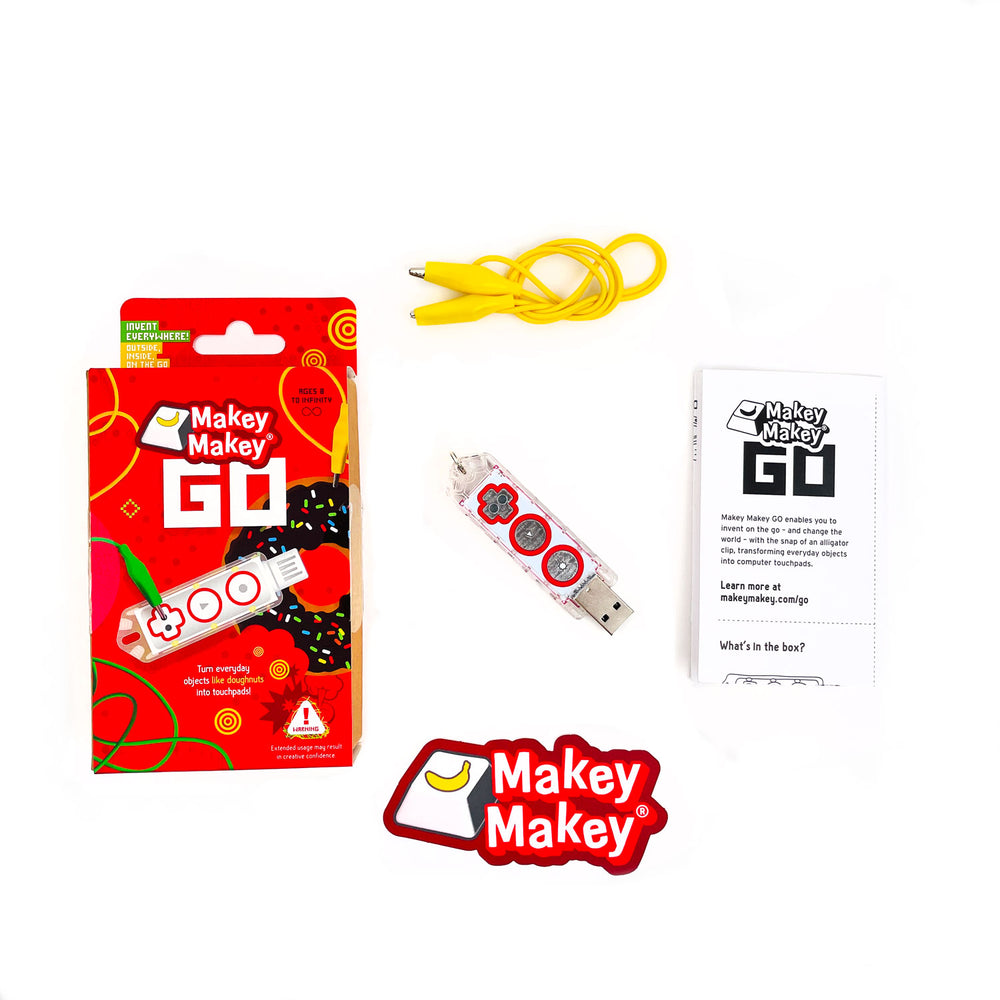Featured Educator: Rachelle Beaudoin at College of Holy Cross
We love the innovative ways that educators (in both formal and informal learning spaces) introduce learners to the concept of physical computing with Makey Makey and coding languages like: Scratch, Processing, and Python. Each month, we like to feature an educator and a unique project they've worked on recently. To read more educator posts, simply sign up for our newsletter.
Meet Rachelle Beaudoin!

Photo by John Buckingham
Rachelle Beaudoin works at the liberal arts school, College of the Holy Cross. She teaches Digital Art Studio, Digital Photography and a class called New Media.
New Media students must take Digital Art Studio first, which is a studio class based on Adobe Programs. This 200 level art class is not necessarily full of art students. These are students who have photoshop skills and have done creative work, but this is an elective class taken by art majors and non art majors alike.
The projects we are sharing today are all from Beaudoin's “New Media Class” that focuses on physical computing and hybrid art. Before embarking on Makey Makey projects, these students created data visualization and projection mapping projects. Rather than teaching coding, this class focuses on software skills. So you might notice the students used Makey Makey with lots of different software like Adobe Premiere, Sound Plant, OBS, and more!
Before Beaudoin started using Makey Makey in this course, she used LilyPad Arduino and students created soft circuits. She wanted to prompt students to “Make something that extends the senses.”
The concepts were unique and interesting. One student made a zipper alarm, and another student had a pillow with police cars. However, the prototypes all ended up very rough and the coding was very difficult.
She realized that soft circuits were too complicated and that hand sewing was a barrier for many students. Having to learn to sew took up too much time in class.
So Rachelle pivoted to using Makey Makey in 2019. It was an easier tool to teach to her students. Plus, it helped the students come up with funny and creative projects. With the Lilypad projects students were having difficulties, but now with Makey Makey the students were not held back by the technology. With that barrier removed, the students could actually be more creative.
100 Years of Chatter
The new prompt for this Interactive art project became “Create a work of art that is interactive” but also try to figure out where this project falls by clarifying the domains in the writing. (Here is the assignment link if you are interested!)
She told the students to ask yourself these questions:
- Is this an art project?
- Is this a museum project?
- Is this an educational tool?
- Is this an accessibility tool?
If students were feeling overwhelmed with the openness of this project, Beaudoin shared a lot of examples of interactive projects.
One year a student made a sound piece that was environmental sounds versus pollution sounds. Another year a student made a joke robot.
This year a lot of students wanted to add video to their projects. One student wanted to share share images of his favorite anime and another student wanted to share dog images and videos. These students both used OBS (Open Broadcaster Software) to use hot keys to share different images based on keypresses.
One student wanted to do something cool with time. She used Adobe Premiere Pro and the Makey Makey scrubbed the video. While, there might be another software like Jitter or Processing that could be a better final production of this type of video sharing, these New Media students were empowered to use software that was accessible to them.
Beaudoin pointed out that we are told these students are digital natives, but a lot of people, especially women, are socialized to think this (coding/software skills/ physical computing) is not for them. Sometimes women are socialized to think working with computers or writing code is not for something they can easily pickup. Luckily, more schools are teaching coding basics, but many young women still feel blocked by technology projects like this. They are worried they aren’t able to do this type of work. So when her students got frustrated easily, Rachelle taught her students that this isn't about the final product, it is really about the process.
What really worked well?
Beaudoin learned it really helped students that she did so many demos first- it took a lot of pressure off of coming up with an idea. Because they made conductive drawings together, learned what is conductive together, they didn’t feel like they had to invent something totally from scratch.
“Makey Makey is so fun, and they don’t usually get that much time in class to have fun and be silly. One day I brought in bananas and was like ‘Everyone gets a banana!’ The students were so surprised but also delighted to have fun in their collegiate level class." |
"One day I asked them to bring in something from their dorm they thought would be conductive. This was really fun because their dorm rooms are such a limited space. So Makey Makey brings a level of playfulness that’s really great for students this age. All of the projects are so different and playful.” |
Here is the course outline for this Makey Makey Project:
- Intro art and interactive art
- BIlly Jean One Key Scratch Project
- Students made alarms instead of switches
- Students learned to count keypresses - the students wanted to know how to do this.
- Students created Blackout poetry
- Learned to light an LED and power a motor
What would you change?
Next year, Beaudoin wants to frame this project more as an art piece. She likes the instruments but wants the final presentation to be more performative.
She would also like to add more framing for students so they aren’t feeling too overwhelmed in creating something, but the project retains the art focus. What she means by this, is the students might create a game, but instead of a game for kids, the game functions more like an art piece. She also wants to frame the project by sharing more contemporary artists that share interactions in their work.
Unique Projects along with their Write-ups












